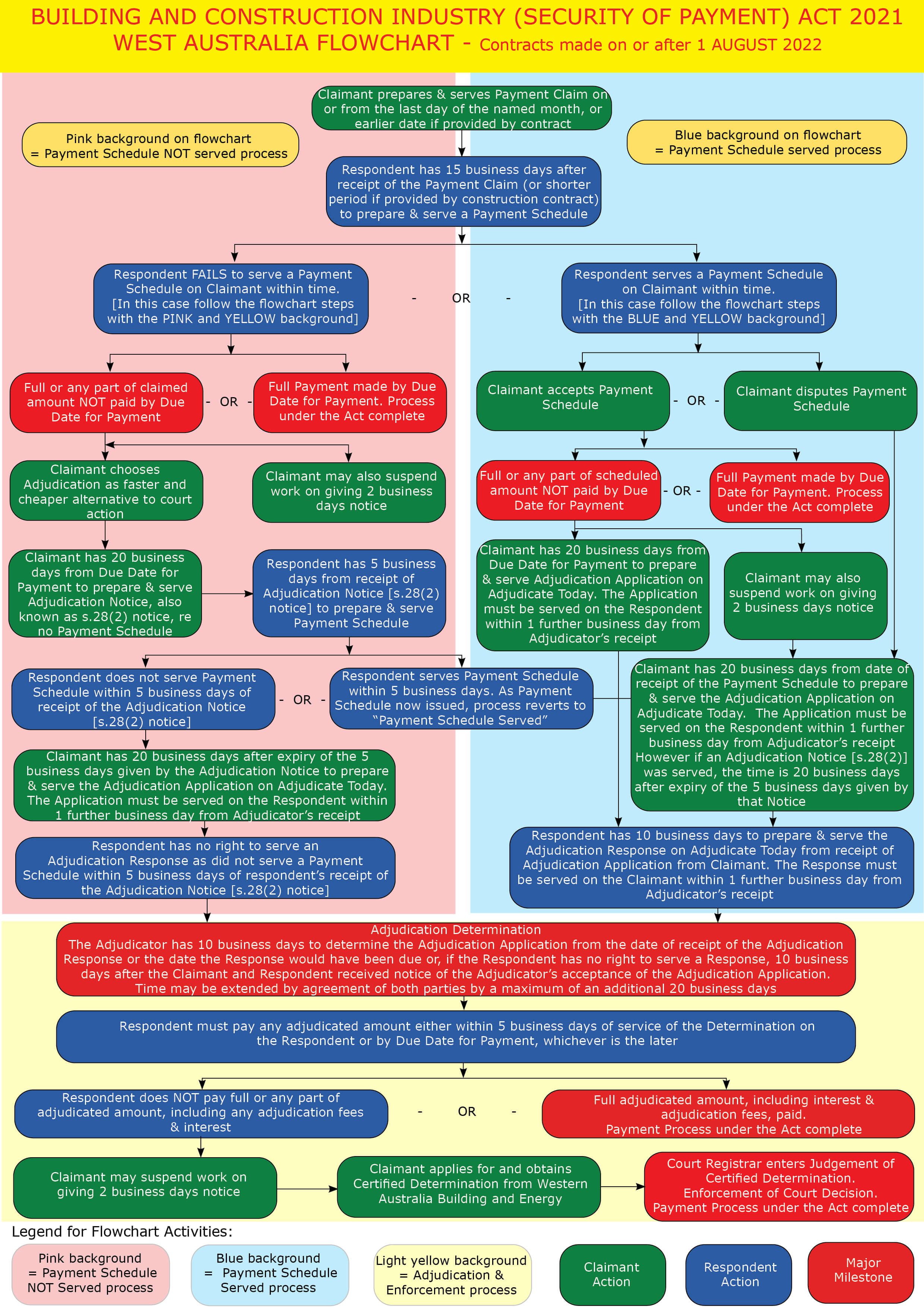Security of Payment and Adjudication in WA – Contracts made after 1 August 2022 - FLOWCHART
The WA government has moved swiftly to implement recommendations for new and effective legislative protections to replace the old security of payment laws. The new Building and Construction Industry (Security of Payment) Act 2021 (the Act) promotes cash flow in WA's building and construction industry by providing additional protections for head contractors, contractors, subcontractors and suppliers, including mechanisms for the recovery of payments. It does not matter whether the job is on a private or government funded project, the Act will apply.
Adjudicate Today (AT) is authorised by the WA Government to provide advice and assistance to all parties using the WA Building and Construction Industry (Security of Payment) Act 2021 (‘the Act) to resolve industry payment disputes.
This Adjudicate Today (AT) website provides practical help and online wizards to help claimants and respondents to:
- Make payment claims
- Respond to payment claims. Such a response is called a payment schedule
- Make adjudication applications
- Respond to adjudication applications. Such a response is called an adjudication response.
Whether you made an adjudication application or submitted an adjudication response, you may not be satisfied with the outcome. In this case, in certain circumstances, you have the right to:
- Make an adjudication review application
- Respond to adjudication review application. Such a response is called an adjudication review response.
Our flowchart (below) shows possible options available to claimants and respondents to the conclusion of the adjudication process. If you wish assistance with review adjudication, click here to be taken to the correct area of the website.
In any particular claim, only some of the flowchart boxes apply. Pink background on the flowchart highlights applicable boxes where the respondent fails to serve a payment schedule in time. Blue background highlights boxes where the payment schedule is served within time. Light yellow background describes the adjudication and enforcement process.
CLICK INSIDE THE FLOWCHART FOR FURTHER INFORMATION
The flowchart is interactive. Placing your cursor in a flowchart box highlights the box, clicking in the box provides detailed information about that step. The backspace arrow in the top left of all browsers returns to the flowchart.
Forms to download and links to our online wizards are available by clicking in the appropriate flowchart box. The wizards offer additional help and are both popular and time-saving.
Clicking in the yellow flowchart heading immediately below gives a brief overview of the Act. This is where you should start if not previously involved with adjudication.
We recommend that you download and print the flowchart, preferably in colour. Keep it handy and tick and date each step as you go - this will prove most helpful.

Click here for help on the first step on the flowchart which is to prepare a payment claim "Claimant prepares & serves Payment Claim on or from the last day of the named month, or earlier date if provided by contract".
If you have any questions about how the Act works and what parties need to do to comply with it, our trained staff are available to answer questions. We provide this information for free and without obligation.
